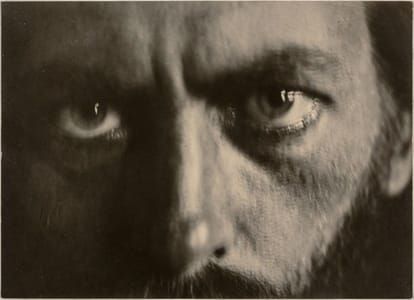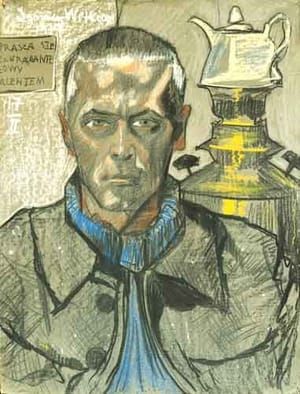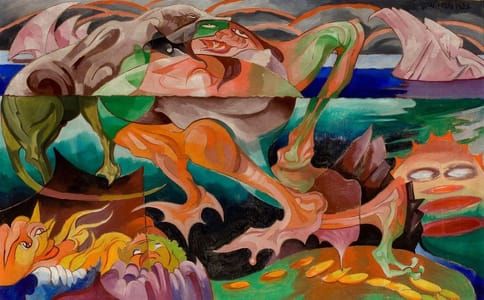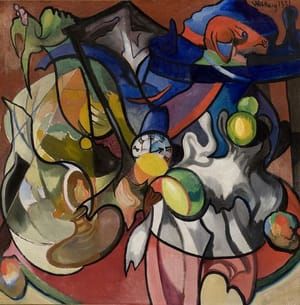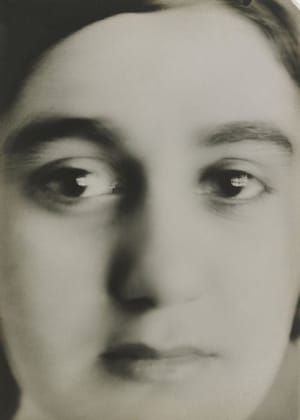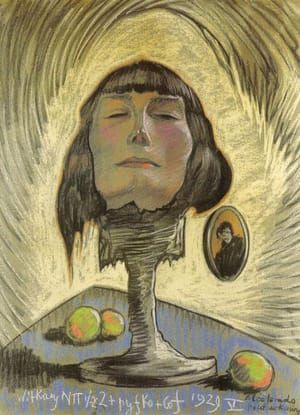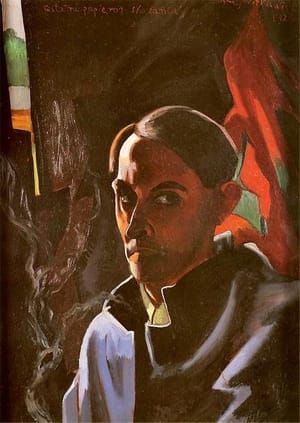

Henryk Kzimierowicz's Portrait
Stanislaw Ignacy Witkiewicz (aka Witkacy)
The Priest Who Quoted Witkacy – Henryk Kazimierowicz
"If God wanted, he could create a second God just like himself – after all he is almighty. That way he wouldn’t be bored." – Farewell to Autumn, 1927
With the remarkable man, Witkacy, come remarkable men he befriended. Malinowski, Gombrowicz and pianist Artur Rubinstein endure as figures of world culture, but Henryk Kazimierowicz is one such man whose existence has fallen into oblivion – as was the case with many exceptional Poles who perished in the Second World War.
Kazimierowicz was a devout, extraordinary Catholic priest, described by Przemysław Pawlak, who has conducted research into the exchange between Witkacy and Kazimierowicz, as a cultural anthropologist, an ethnologist of religion, the pioneer of ecumenism and a book lover and admirer of Witkacy’s plays.
In his text On How the Priest Quoted Witkacy in the Catholic Press / O tym, jak Xsiądz w prasie katolickiej Witkacego cytował, Pawlak explains that if the artist did come into contact with priests, it was usually in Zakopane, the resort capital of the Tatra Mountains. Common themes and interests normally centered around mountaineering and mutual acquaintances. Yet Kazimierowicz proved an exception. He had read, analyzed and studied Witkacy’s plays with devotion long before their first encounter. His passion for the plays came at a time when contemporary critics showed little understanding, not to mention appreciation, of Witkacy’s work. Kazimierowicz instigated contact, showing up in Witkacy’s Warsaw apartment on Bracka Street. This meeting marked the beginning of an 8-year friendship, which lasted until Witkacy’s suicide.
Witkacy’s dedication to Kazimierowicz on the cover of Belzeebub Sonata reads “To Beloved Henryk Kazimierowicz, the Priest Doctor out of this world, or rather out of one of my unwritten plays, I offer with signs of my friendship, respect and gratitude, Witkacjusz 1938”. Courtesy of Przemysław Pawlak
Witkacy had full trust in this relation, and frequently asked Kazimierowicz to advise him and to correct his manuscripts. Not only did the man of God correct the plays, he staged them in amateur parish theatres. On one occasion, Witkacy visited a town where Kazimierowicz staged The Madman and the Nun. The vicar, who had familiarized himself with the appendix to the treatise Narcotics and thus knew of Witkacy’s love of a daily bath, went to a lot of trouble to ensure Witkacy a tub and a maid with a bristle brush.
Kazimierowicz was an exceptional figure and, similiar to Witkacy, was someone ahead of his times. In articles for the Polish Catholic Review / Przegląd Katolicki and the Church Paper / Gazeta Kościelna, he enthusiastically quoted and referenced the works of Freud, Jung and Witkacy. Not only was this priest interested in psychoanalysis and acquainted with its major theoretical concepts and texts, he was also convinced it was a useful tool in the work of a confessor. He authored a paper, Catholicism, in the light of psychoanalysis, in which he employed the theory of instincts to explain suffering and problems encountered by men. Kazimierowicz delved into the anthropology and enthnology of religion, convinced of the mutual emotional root of all religious belief. His texts set up the word “pope” against another, “libido”, in once sentence, only to fearlessly follow a reasoning in service of zealous faith. The priest’s publications were too controversial for his times – as a result, he was repeatedly moved and redelegated across provincial parishes. Most likely, in the Catholic Poland of today, he would prove even more controversial…
Kazimierowicz’s scattered texts has been collected by Przemysław Pawlak, but the volume remains unpublished to date and his oeuvre is yet to be re-discovered. For original resources in Polish, see: http://witkacologia.eu
We cannot claim that the priest was Witkacy’s confessor – the artist’s areligious stance was something he firmly held on to throughout his life. Kazimierowicz was most definitely a friend – another Specific Existence.
[http://culture.pl/en/article/an-alternative-biography-of-witkacy]
Uploaded on Jan 28, 2018 by Suzan Hamer
Arthur
Wait what?

